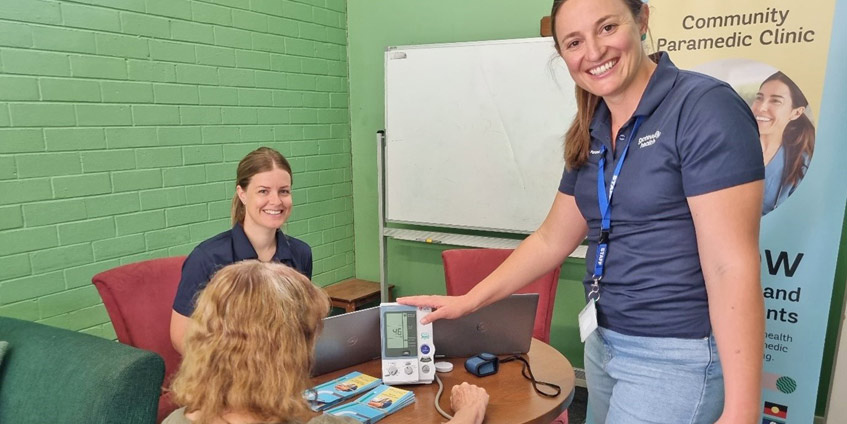By Kevin Jiang for the Toronto Star
Nearly half of all dementia cases around the globe could be prevented or delayed, a groundbreaking new report suggests.
And dodging cognitive decline could start as simply as getting new glasses or eating healthier.
The blockbuster Lancet paper published Wednesday identified 14 major risk factors for dementia that we can change — including two new ones.
By addressing the 14 factors, we can delay or prevent 45 per cent of all dementia cases from happening, the paper’s lead author told the Star.
“There’s a lot you can do to reduce your chance of dementia, and that will also make you feel generally better immediately,” said Dr. Gill Livingston, a professor of psychiatry in older people at University College London.
“There’s also a lot that can be done in terms of policy,” she continued. “Some people will still develop dementia, but if you do these things, you will probably live a longer, healthier life.”
Livingston led the 2024 Lancet Commission on Dementia Prevention, Intervention and Care, an undertaking that combed through hundreds of studies and information about millions of individuals to suss out the most definitive evidence behind what leads to dementia — and how we can avoid it.
New risk factors for dementia identified
The study identified two new, major risk factors: poor, uncorrected eyesight and “bad” cholesterol.
High levels of LDL cholesterol, specifically in midlife but not late life, is linked to about seven per cent of all dementia cases, the study reads — placing it among the top risk factors, tied with hearing loss.
Untreated vision loss in older adults is associated with another two per cent of cases.
The exact nature of this relationship is unclear. It’s possible the vision loss is related to underlying conditions such as diabetes, another major risk factor for dementia, the paper said. But other studies suggest a direct causal relationship between visual loss and dementia.
Other modifiable risk factors for dementia
The new health conditions join a dozen avoidable risk factors we already know about: poor education, head injury, physical inactivity, smoking, excessive alcohol consumption, hypertension, obesity, diabetes, hearing loss, depression, infrequent social contact and air pollution.
The most significant risk factors, other than hearing loss and high LDL cholesterol, include poor education in early life, social isolation and air pollution in late life, and depression and traumatic brain injury in midlife.
“The good news is cigarette smoking has gone down worldwide, so it’s less of a risk factor, in terms of the whole population,” Livingston said. “Similarly, education has increased, so there is less risk from lack of education.”
Dr. Allison Sekuler, president and chief scientist at Toronto’s Baycrest Academy for Research and Education, noted there are likely more risk factors we don’t yet know about. It’s a “conservative estimate” to call just 45 per cent of all dementia cases preventable, she said.
“In fact, it’s probably going to end up being significantly more than 50 per cent” after adding in the risk factors we don’t know about, Sekuler, who is unaffiliated with the commission, told the Star.
How you can prevent or delay dementia
Dementia is not predestined, even if your genetics predispose you to the condition, Sekuler explained. There are lifestyle changes that can dramatically reduce your odds of cognitive decline — and the earlier you make these changes, the better your prospects are down the line.
The first thing Livingston recommends is to get your hearing checked out, and to persevere with hearing aids if you need them. Similarly, make sure you’re wearing glasses or contacts if your eyesight isn’t perfect.
“Try and keep active,” she continued. “I’m talking about active in your brain and active socially and active in movement. And the easiest ways to keep your brain active are to be able to hear and see other people and interact with them.”
Keeping physically active can start as simply as going for a walk everyday, she said.
Livingston also recommended seeing a doctor to get your cholesterol, blood pressure and blood sugar levels measured — “and if they’re too high, treat them.”
Dr. Roger Wong, a clinical professor of geriatric medicine at the University of British Columbia, added that activities such as socialization or daily exercise also help to shore up your “cognitive reserve,” or the brain’s ability to soldier on despite facing cognitive decline.
“People can have risk factors for developing dementia. But if they have enough cognitive reserves, they may not end up (developing) dementia,” he said. That’s partly why lifestyle changes can make a major difference, even if dementia runs in your family.
Policy solutions
But lifestyle changes alone aren’t enough to make a sizable difference, Wong explained. We need policymakers to take a “population health approach” to preventing dementia, he said.
That includes ensuring equitable access to community services, such as group exercise programs, and medical devices: “We know for hearing aids, for example, the cost overall in Canada is quite high,” Wong said.
“For people coming from a disadvantaged socioeconomic background, do we have policies and support structures in place to make sure that they have access?”
Livingston’s team outlined 13 population-level recommendations for policymakers, addressing each of dementia’s 14 modifiable risk factors. These include:
- Ensuring quality education is available for all and encouraging cognitively stimulating activities in midlife;
- Making hearing aids accessible for people with hearing loss and decreasing harmful noise exposure;
- Treating depression effectively;
- Encouraging the use of helmets and head protection in contact sports and on bicycles;
- Encouraging exercise and participation in sports;
- Reducing cigarette smoking through education, price control and making smoking cessation advice accessible. Prevent smoking in public places;
- Preventing or reducing hypertension and maintain systolic blood pressure of 130 mm Hg or less from age 40 and onwards;
- Detecting and treating high LDL cholesterol from midlife;
- Maintaining a healthy weight and treating obesity as early as possible, which also helps to prevent diabetes;
- Reducing high alcohol consumption through price control and increasing awareness of the risks of overconsumption;
- Prioritizing age-friendly and supportive community environments and housing. Reduce social isolation by facilitating participation in activities and living with others;
- Making screening and treatment for vision loss accessible for all; and
- Reducing exposure to air pollution.
A separate study accompanying Livingston’s paper estimated that implementing some of these recommendations in England could yield more than £4 billion in savings by reducing dementia rates, while providing residents a combined 70,000 years of good health.
In 2019, an estimated 57 million people were living with dementia worldwide. If nothing is done, this number is projected to soar to 153 million by 2050.
“It’s never too late or too early to start taking action to decrease your dementia risk,” Sekuler said. “Everybody, at all ages, should be taking it seriously.”



